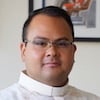The Examen Prayer, sometimes referred to as the “Examination of Consciousness,” is a staple of Ignatian spirituality. What we know today as the Examen is an adaptation of what Ignatius wrote in the Spiritual Exercises. Ignatius himself placed a great deal of emphasis on this prayer, stating that every Jesuit must prioritize it in their daily routine. As with many aspects of Ignatian spirituality, Ignatius did not invent this concept, but he did adapt it in a new form which continued to develop over time. Here I will explore the original concept of the Examen Prayer and how it has gone through various adaptations to the present day.
The examination of conscience is a practice that has been exercised throughout the millennia of Christianity. Although the notion of “conscience” may not have been around during early Christianity, it was not uncommon for one to take stock and to see how one’s life measured up to Christian values. Ignatius suggests the method of the Examen Prayer in the following five points:
- The first point is to give thanks to God our Lord for the benefits I have received.
- The second is to ask grace to know my sins and rid myself of them.
- The third is to ask an account of my soul from the hour of rising to the present examen, hour by hour, or period by period; first as to thoughts, then words, then deeds, in the same order as was given for the particular examination.
- The fourth is to ask pardon of God our Lord for my faults.
- The fifth is to resolve, with His grace, to amend them. Close with an Our Father. 1
As spiritual directors, Jesuits have passed on various iterations of the Examen. If we look at its development, we can see how the Examen is a lens for living daily life.
Fr Joseph Tetlow, SJ, offers an account of how the Examen was prayed up until around the Second Vatican Council. He recalls when, during his time of formation, the Examen was prayed twice per day—at noon and in the evening—and entailed the use of a string of beads. These beads were to be used during the day to take account of faults or failings that the Jesuit would bring to his time of Examen. The Jesuit employed the help of a booklet that guided him through the steps of the Examen. This booklet included directives on how to proceed in taking account of faults, how to make a judgement on whether one sinned in thought, word or deed, and how to fight against particular faults and sins. The guiding principles, of course, were mainly the Ten Commandments and the Seven Capital (or Deadly) Sins.
Fr Tetlow dubs this method as “The Accountant’s Examen” since its exercise demanded a self-scrutinizing account of one’s actions. 2 The exercise felt more like a checklist to be run through in a quarter hour, than a means to connect one with God. In fact, as Fr Tetlow testifies, many Jesuits began to resent the practice of the Examen due to its seemingly inherent moralizing character.
Later in the 70’s, Fr George Aschenbrenner, SJ wrote an article in Review for Religious offering a new perspective on the Examen Prayer as a practice more in light of “consciousness” than of “conscience”: One discerns how one was conscious of God’s activity. In his own words,
Though we were always told that the examen of conscience in religious life was not the same as a preparation for confession, it was actually explained and treated as though it were much the same. The prime concern was with what good or bad actions we had done each day. In discernment the prime concern is not with the morality of good or bad actions; rather the concern is how the Lord is affecting and moving us (often quite spontaneously!) deep in our own affective consciousness. 3
In other words, the Examen is not about taking account of my behavior or going through a checklist of the Ten Commandments or the Capital Sins. Instead, I look back on the day to discern what God was trying to communicate or teach through different moments, no matter how great or mundane the moment could have been. Fr Tetlow dubbed this change in perspective as the “Aschenbrenner Shift”.
This “Shift” gave rise to different presentations of the Examen Prayer. Here is one offered by Fr David Fleming, SJ:
- Giving thanks to God our Lord for all the favors received;
- Asking the help of the Spirit to enlighten me so that I may see with the light of God’s grace;
- Going back over the events of the day or of the time since my last confession to see where God has been present in my life and where I have kept God out—the sinful acts, whether in thoughts, words, or deeds, whether it be things I have done or I have failed to do, and the tendencies or roots of such sinful behavior;
- Expressing my sorrow and asking God’s forgiving love to heal and strengthen me;
- Praying for the grace to be more totally available to God who loves me so totally. 4
While there are only subtle differences in language, we can see that the language of the third point has less of the “accountant’s” approach. Instead of applying a scrutinizing eye to my actions during the day, I am invited to recognize that there are ways in which I may not have allowed God to work through my life. In other words, I view “sins” and “faults” in relationship with God rather than as transgressions against rules. And in light of this, I arrive at recognizing their very roots rather than just counting them off.
Within the context of religious life the Examen for us Jesuits is, to borrow the words of Fr Aschenbrenner,
a daily renewal and growth in our religious identity—this unique flesh-spirit person being loved by God and called by Him deep in his personal affective world. It is not possible for me to make an examen without confronting my own identity in Christ before the Father—my own religious identity as poor, celibate, and obedient in imitation of Christ as experienced in the charism of my religious vocation. 5
Regardless of whether or not you’re in religious life, the Examen is essentially a means to ‘measure’ yourself according to your claimed identity. Rather than being something that is strictly for our own sake (although holiness of life and personal sanctification are important), our Christian identity is for others to benefit from wherever and whenever we may encounter them.
With this very identity taken to heart, here is a simple iteration of the Examen that many of us in the Ignatian tradition use today:
- Place yourself in God’s presence. Give thanks for God’s great love for you.
- Pray for the grace to understand how God is acting in your life.
- Review your day — recall specific moments and your feelings at the time.
- Reflect on what you did, said, or thought in those instances. Were you drawing closer to God, or further away?
- Look toward tomorrow — think of how you might collaborate more effectively with God’s plan. Be specific, and conclude with the “Our Father.” 6
The result of frequently practicing the Examen is that we form the habit of viewing all of life’s activity with this lens in real-time instead of simply in retrospect during the Examen period. This influences how we act throughout the day, indeed throughout our life. Everything that happens can lead to one’s development as a child of God, thus crystallizing our Christian identity even more. As Fr Aschenbrenner proposes, “The specific exercise of examen is ultimately aimed at developing a heart with a discerning vision to be active not only for one or two quarter-hour periods in a day but continually.” 7
- Ganss, SJ, The Spiritual Exercises of Saint Ignatius, 38. ↩
- Tetlow, SJ, “The Most Post-Modern Prayer,” 3. ↩
- Aschenbrenner, SJ, “Consciousness Examen,” 14. ↩
- Fleming, SJ, Draw Me Into Your Friendship, 33. ↩
- Aschenbrenner, SJ, “Consciousness Examen,” 15. ↩
- https://www.jesuits.org/spirituality/the-ignatian-examen/ ↩
- Aschenbrenner, SJ, 16. ↩


